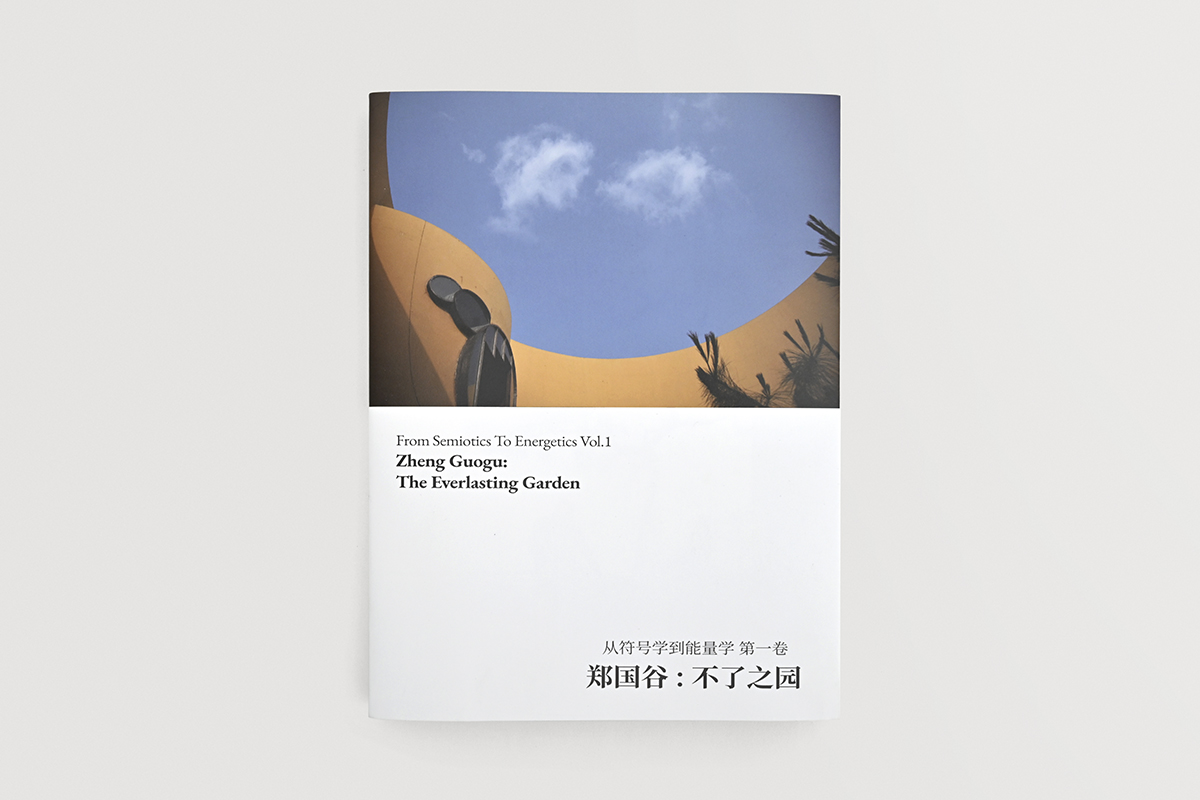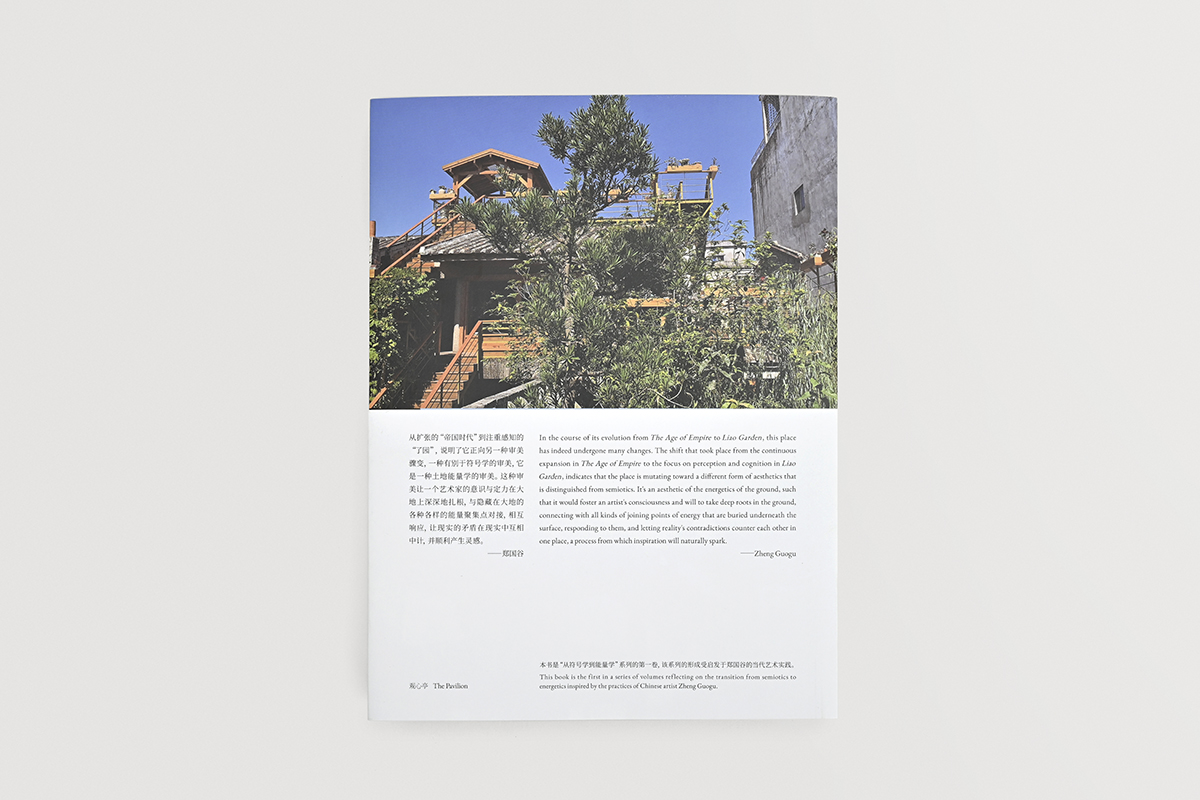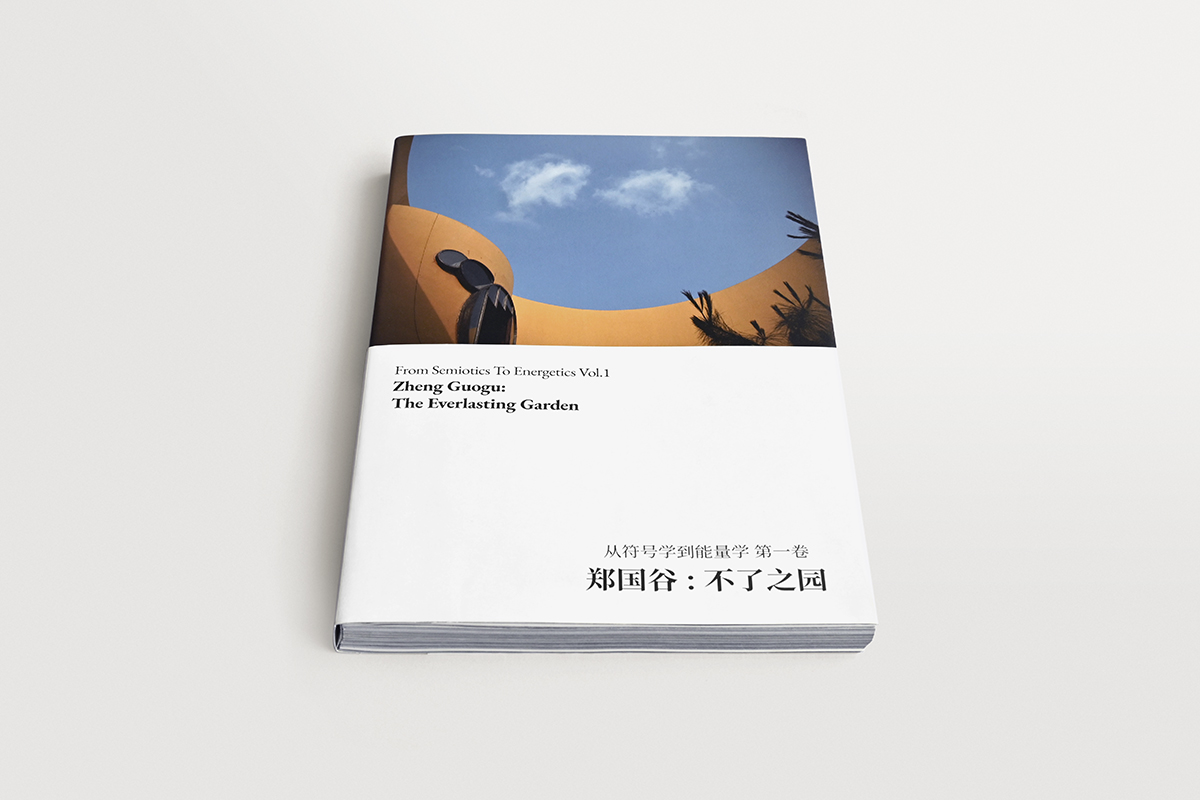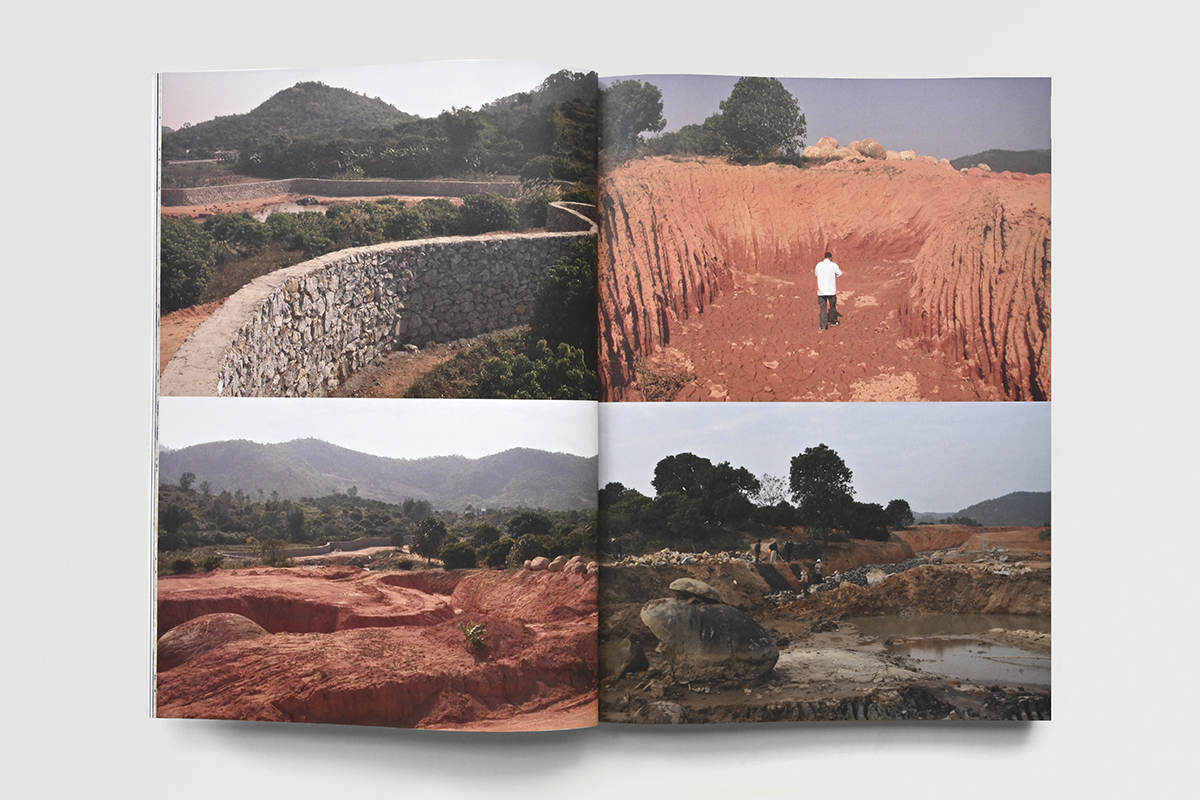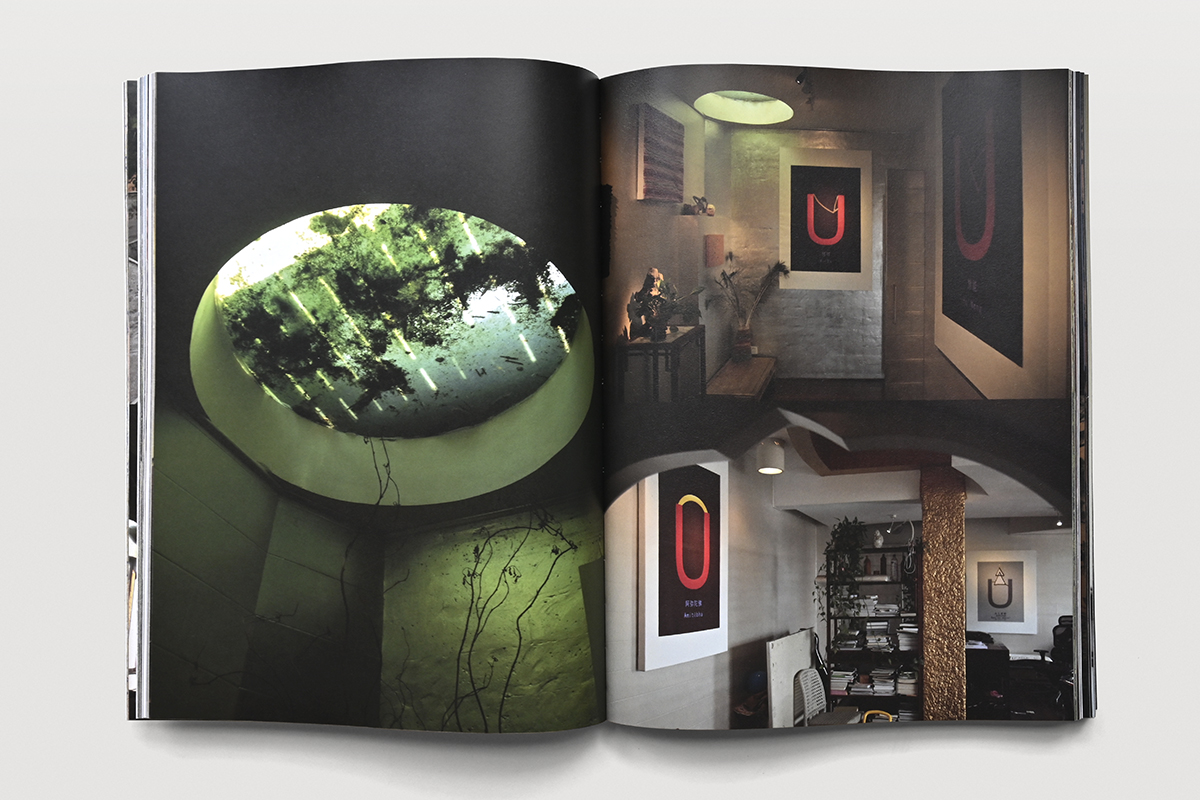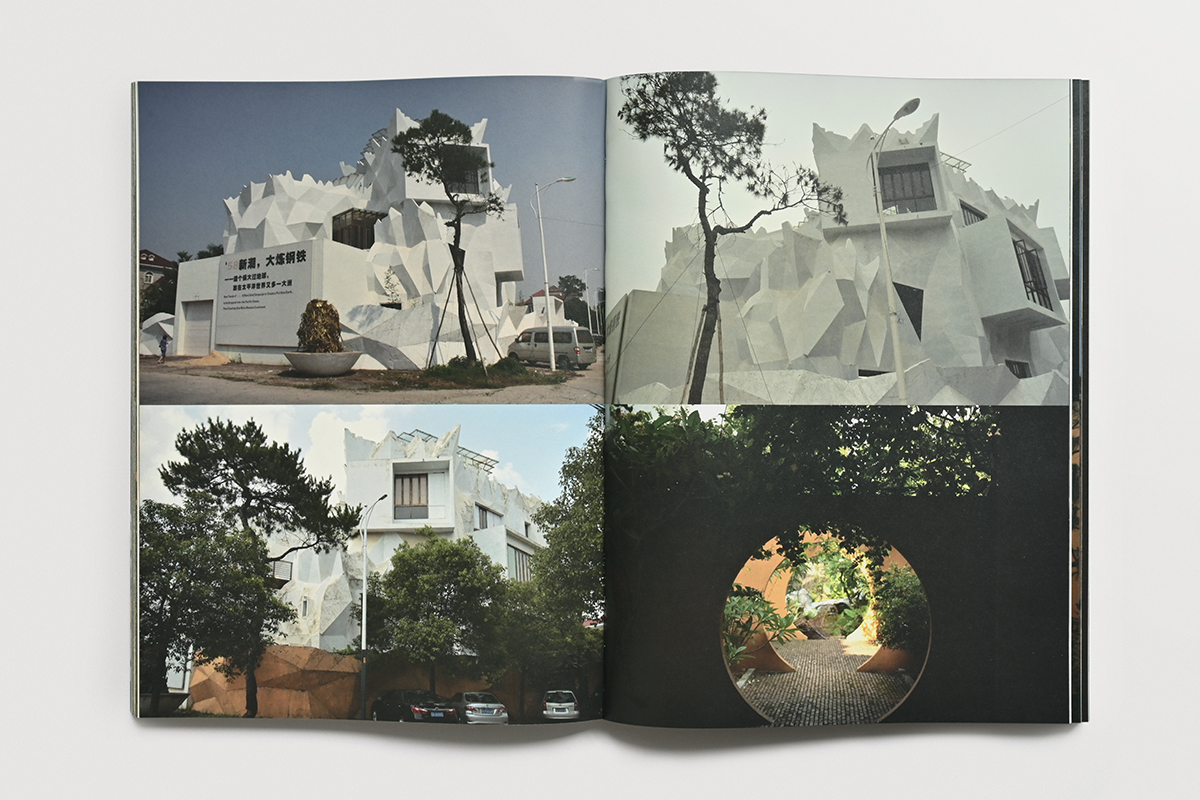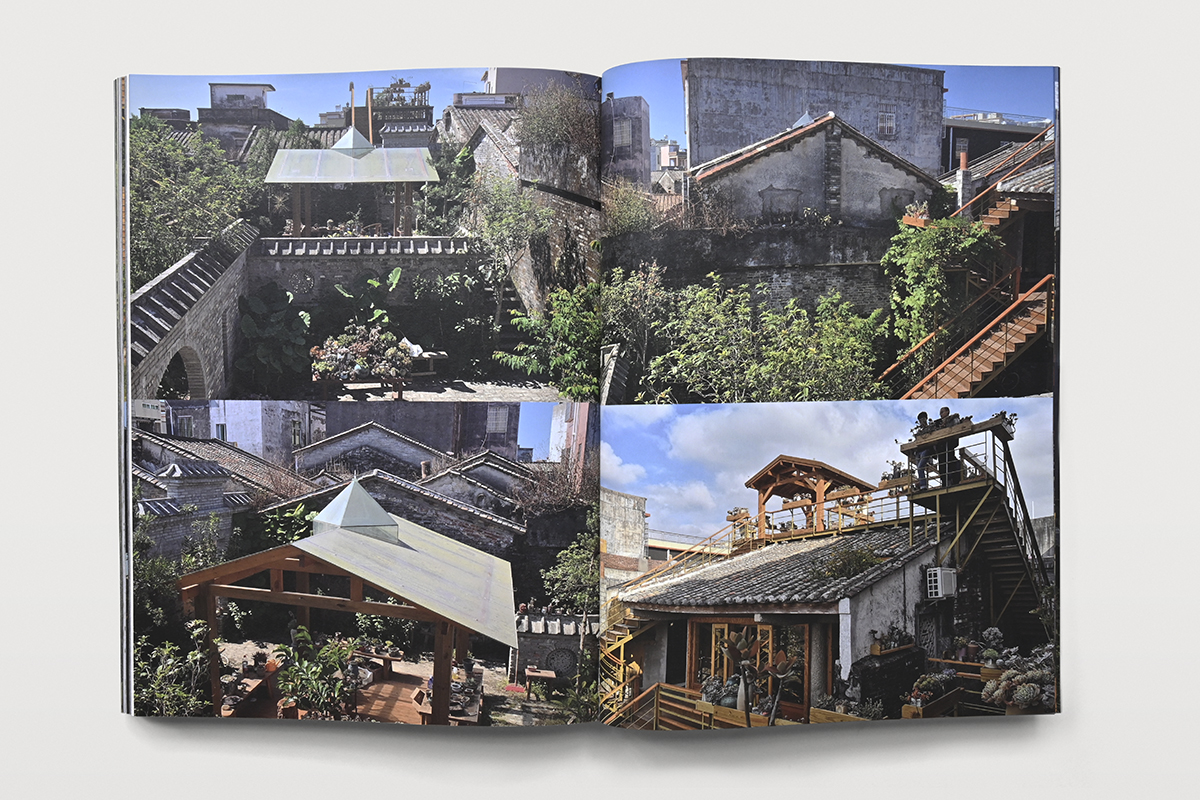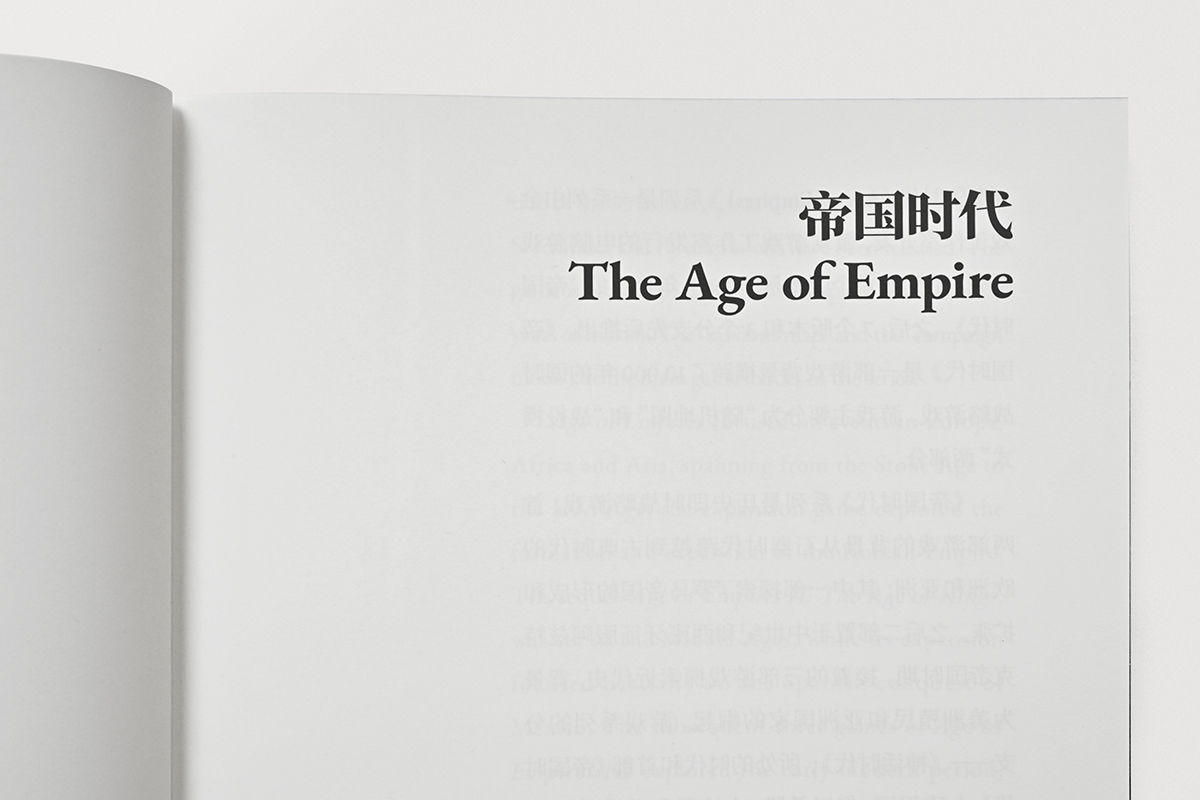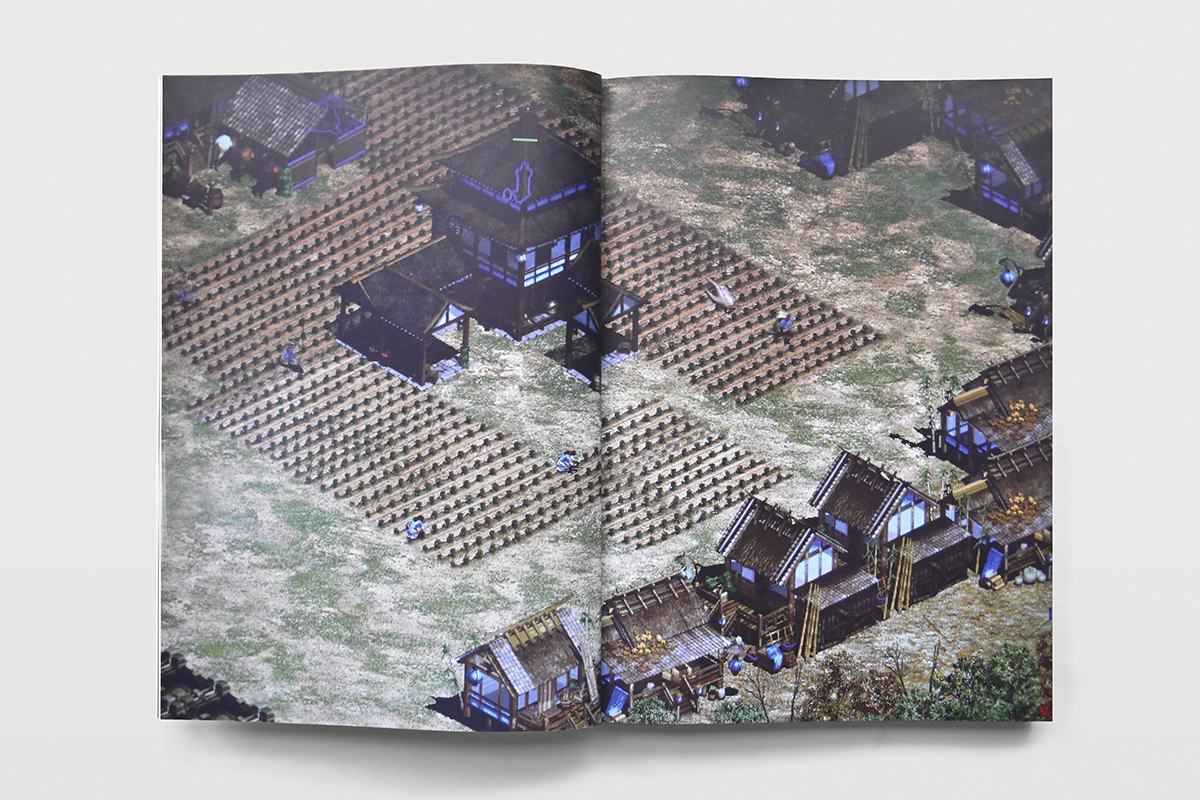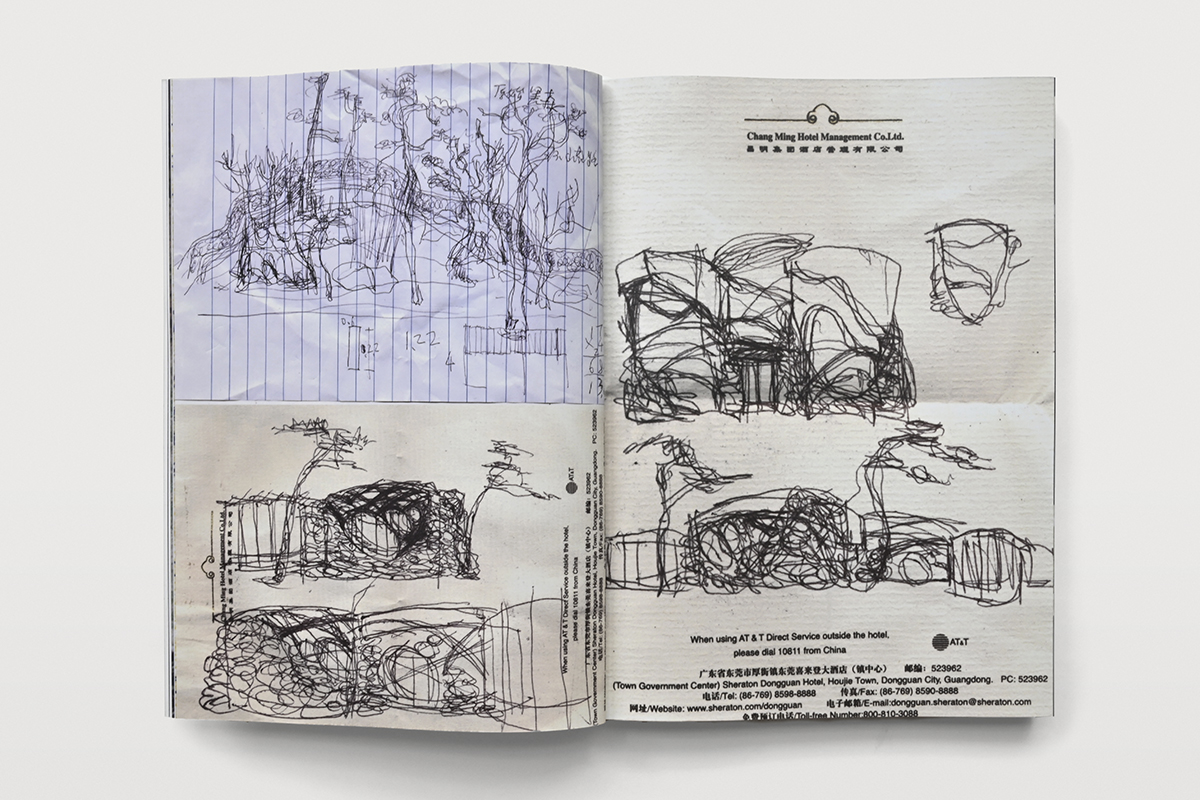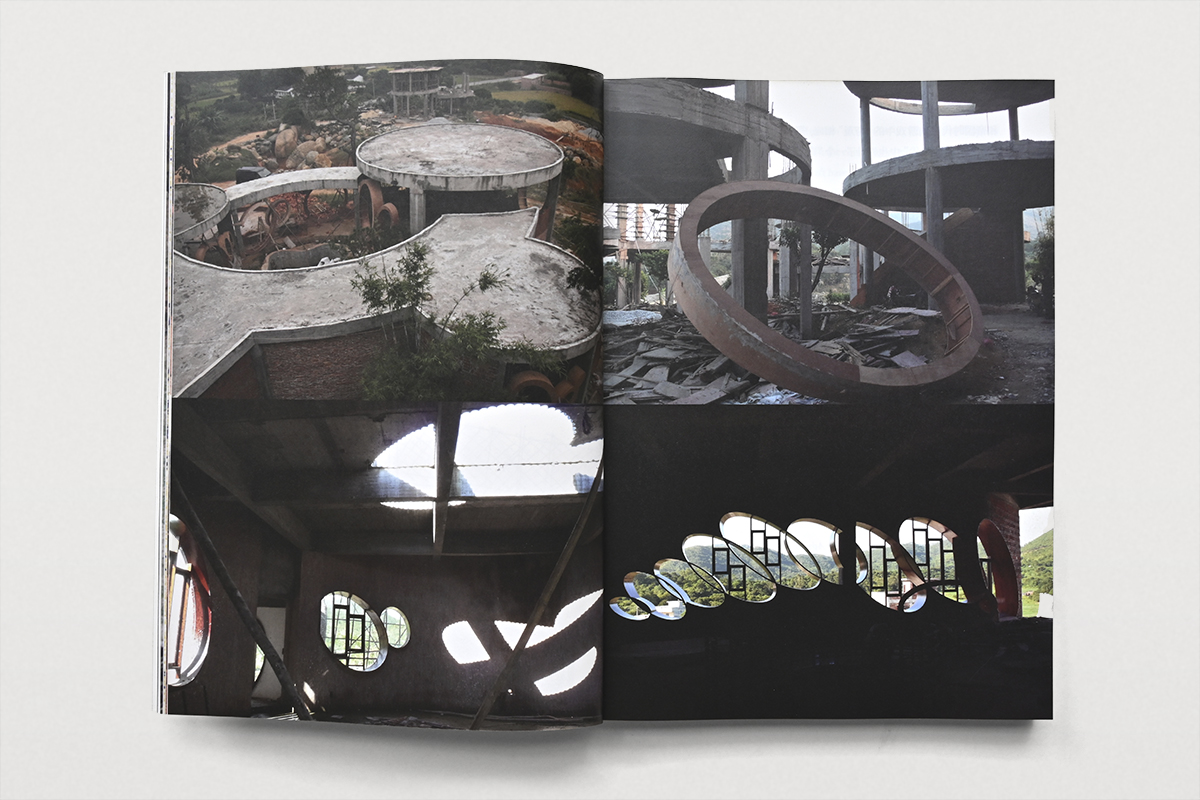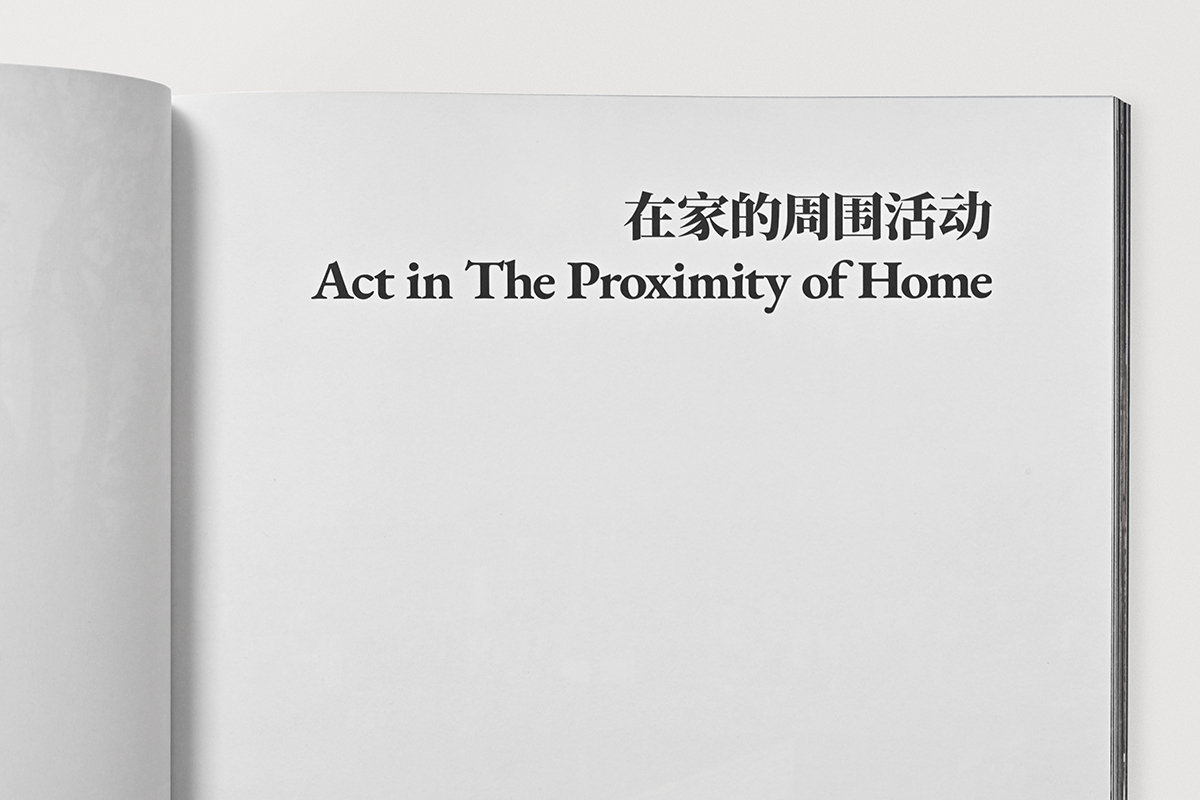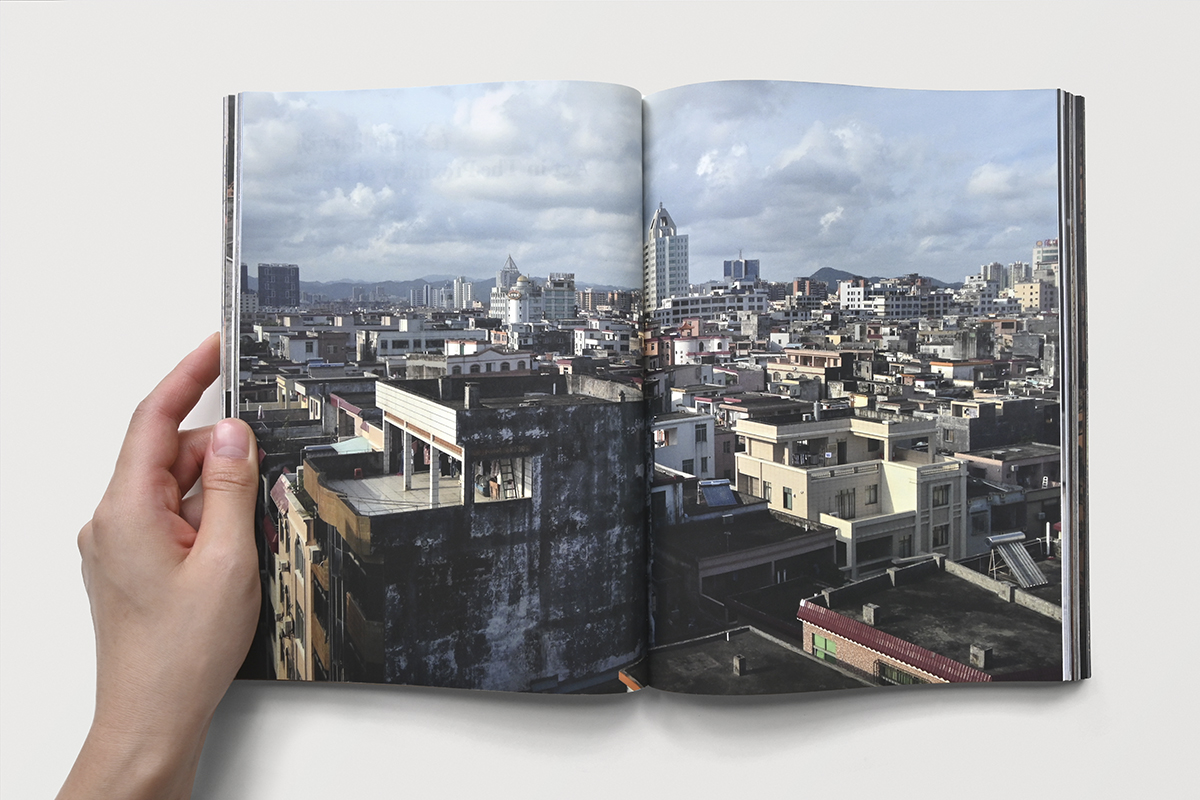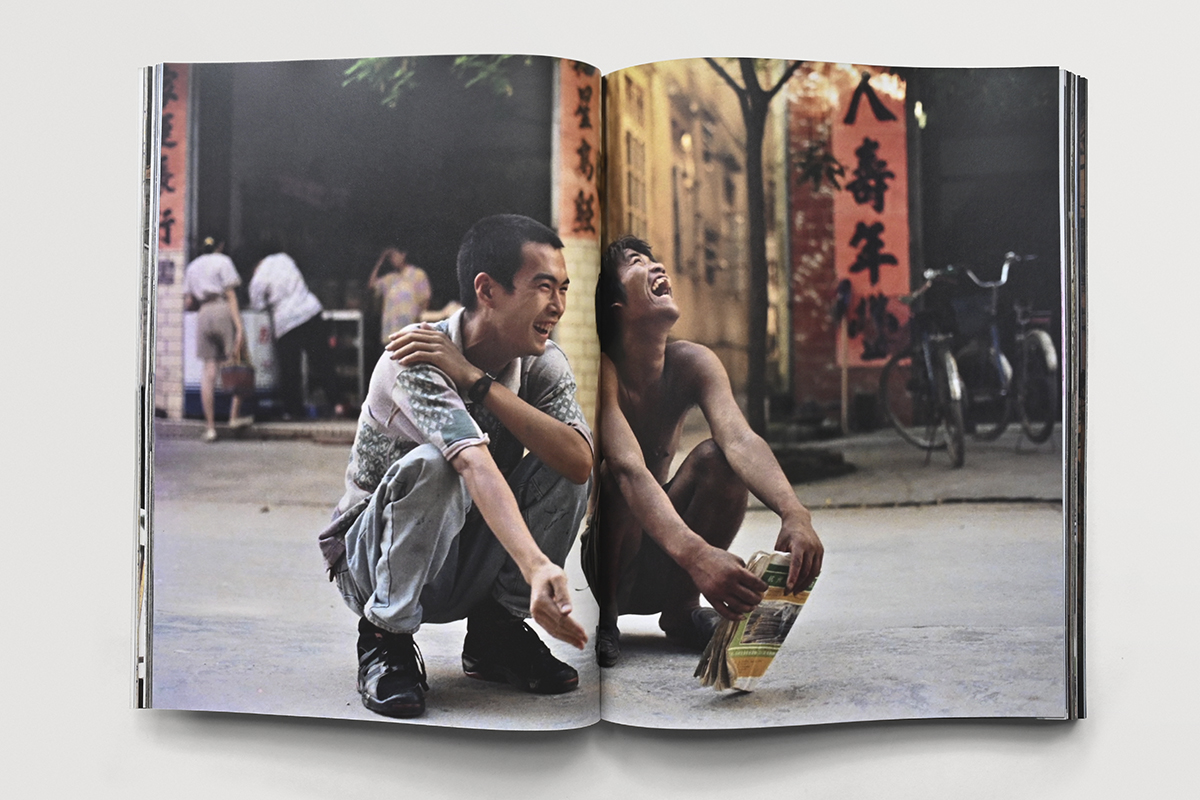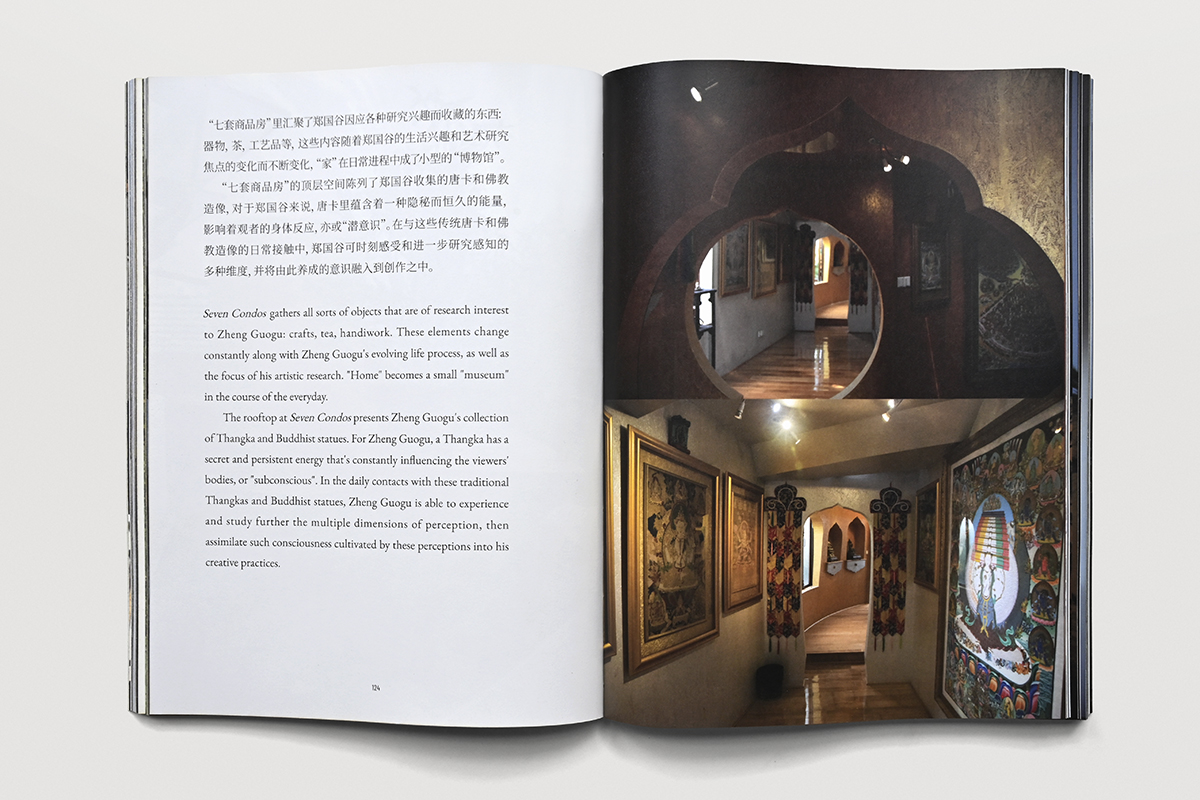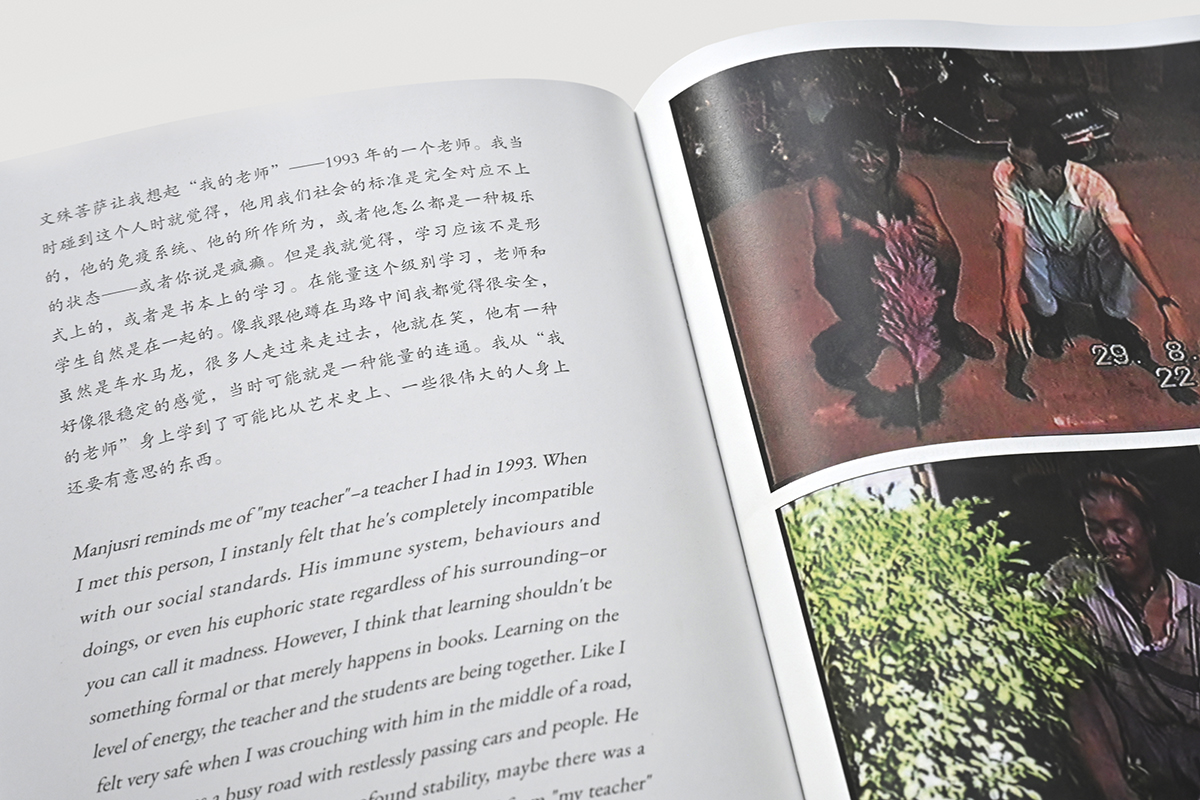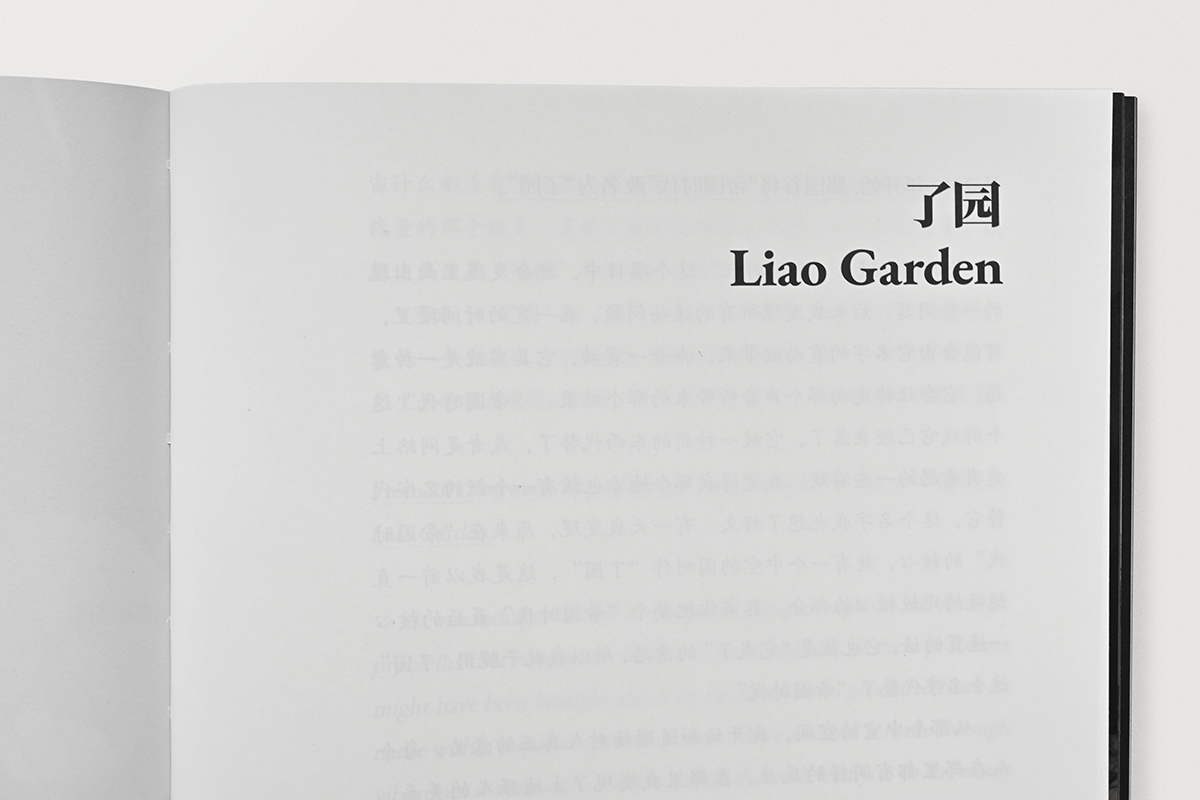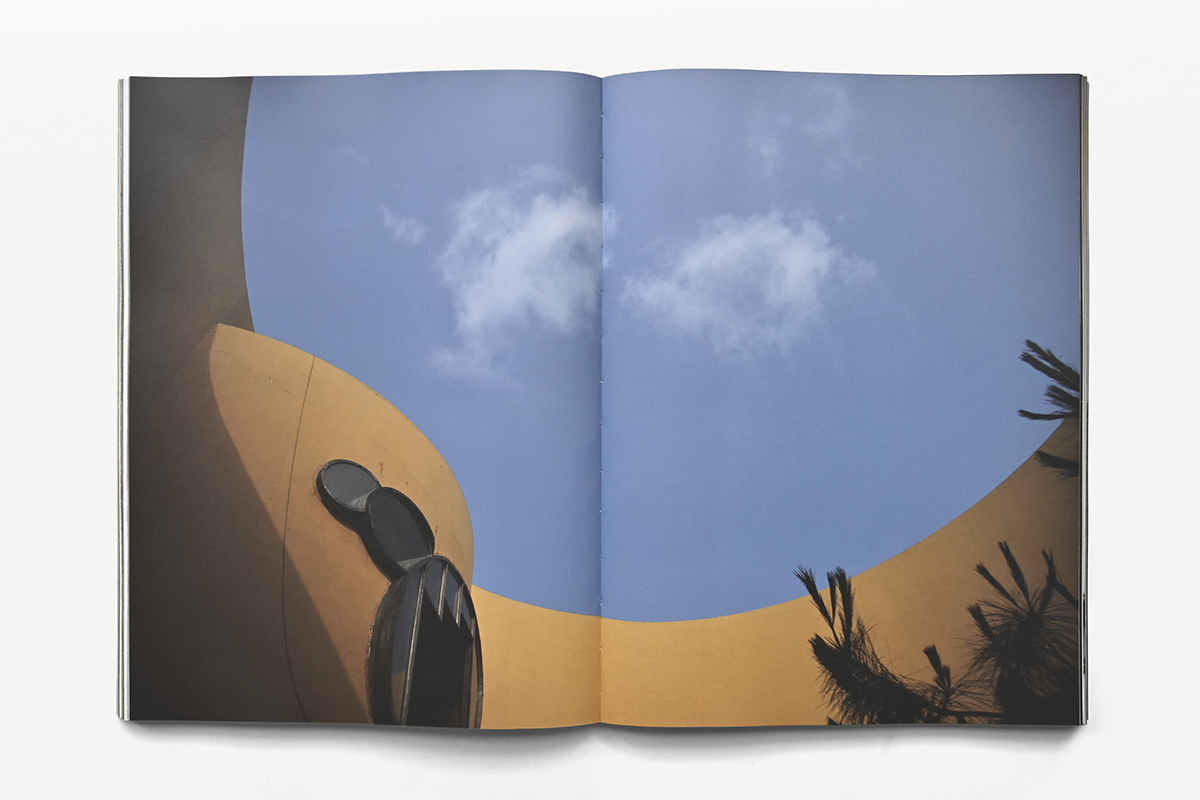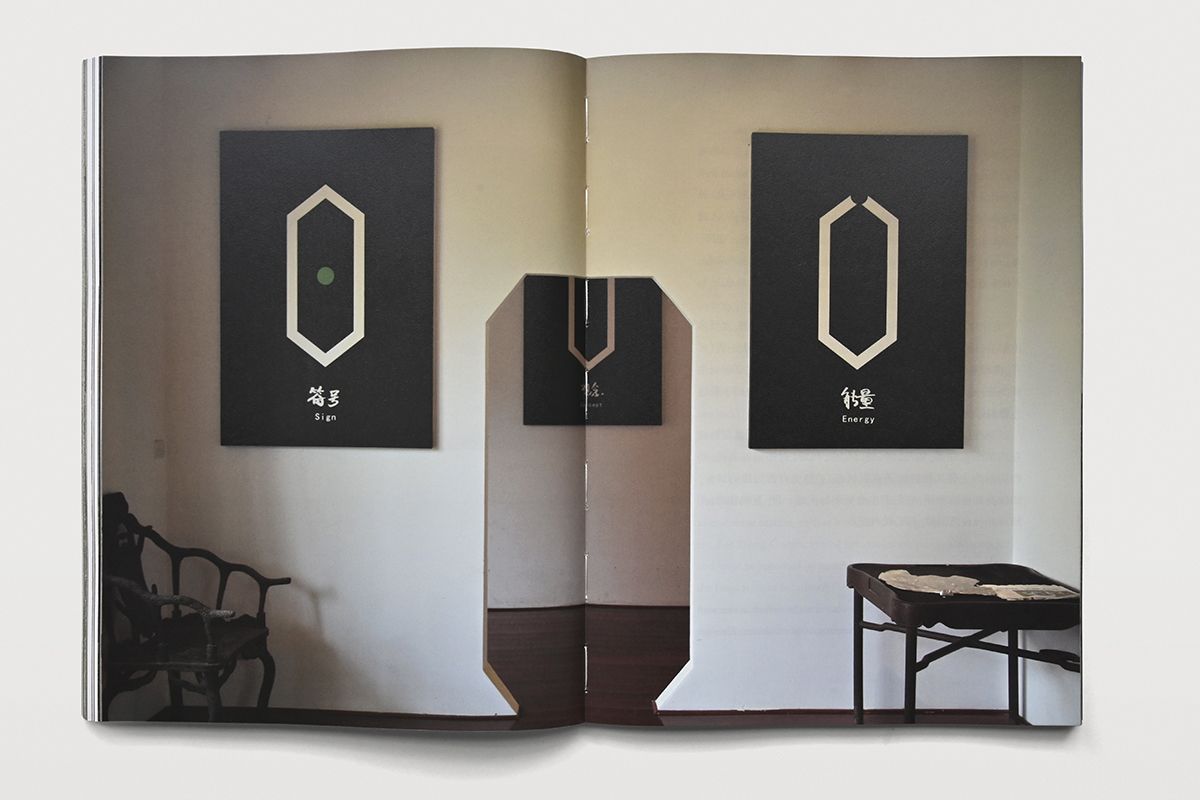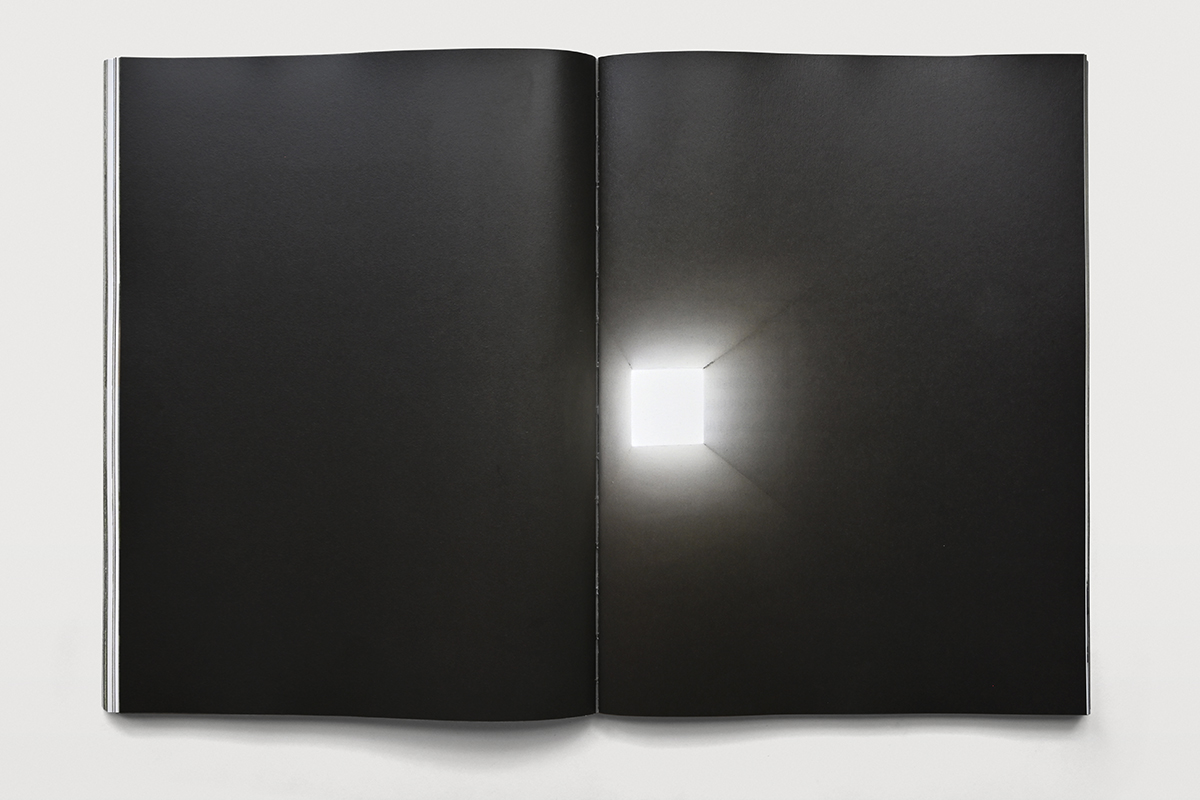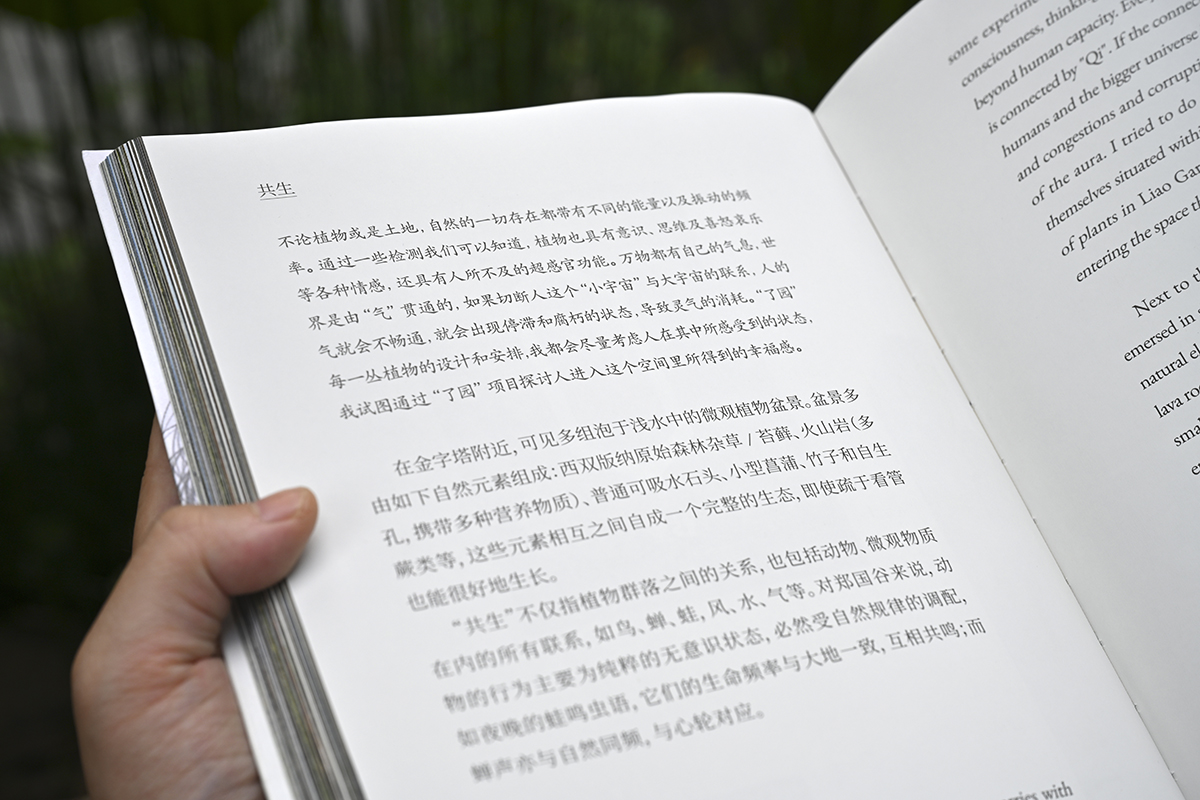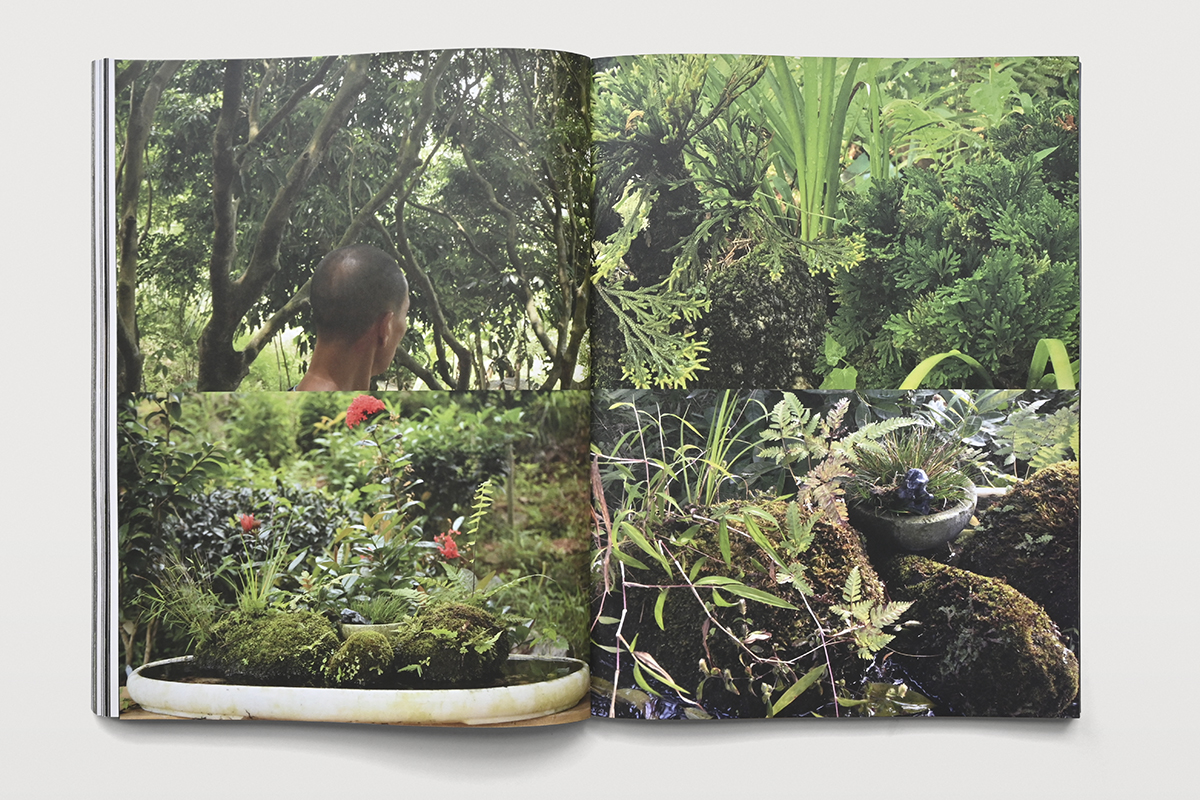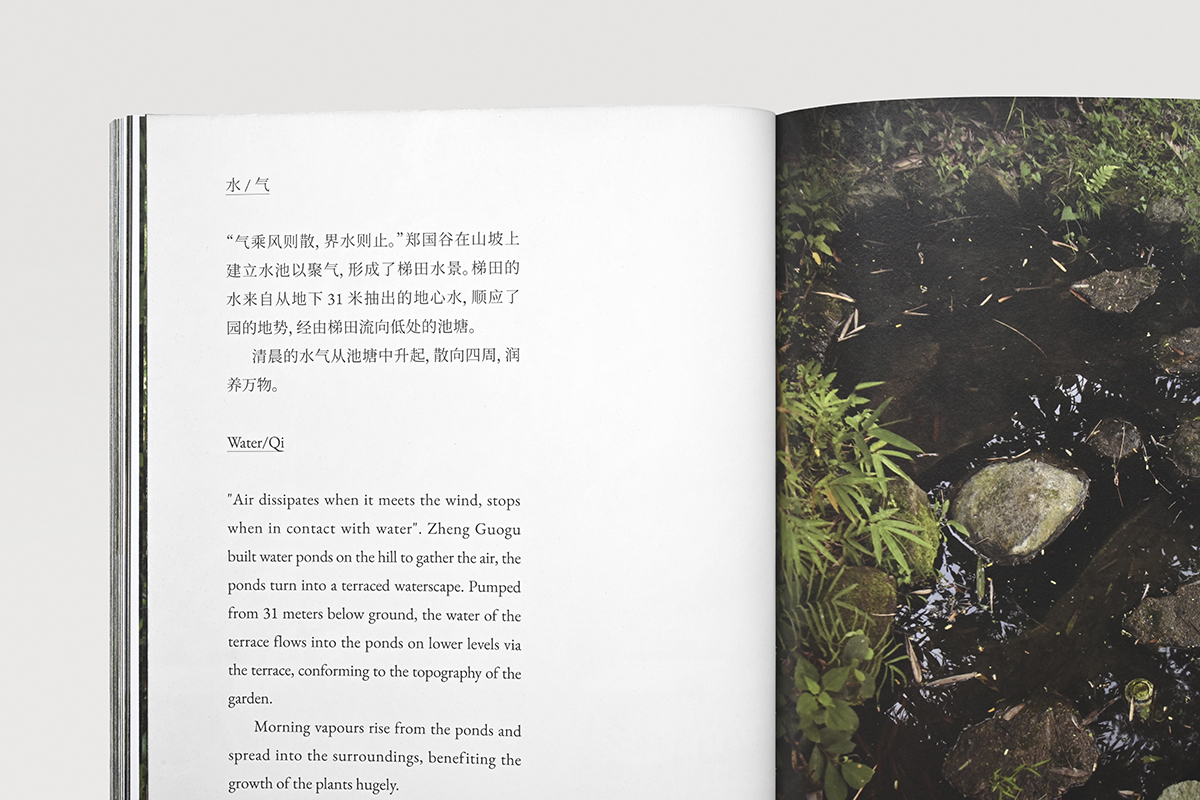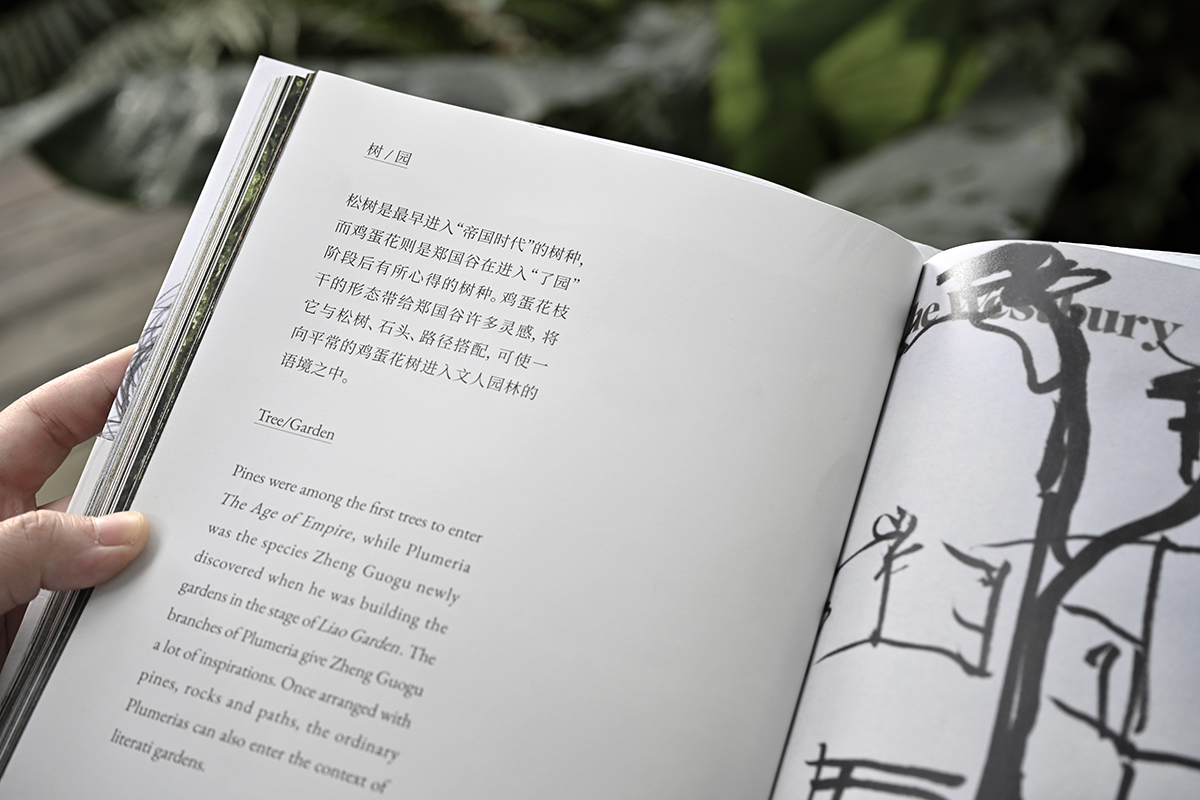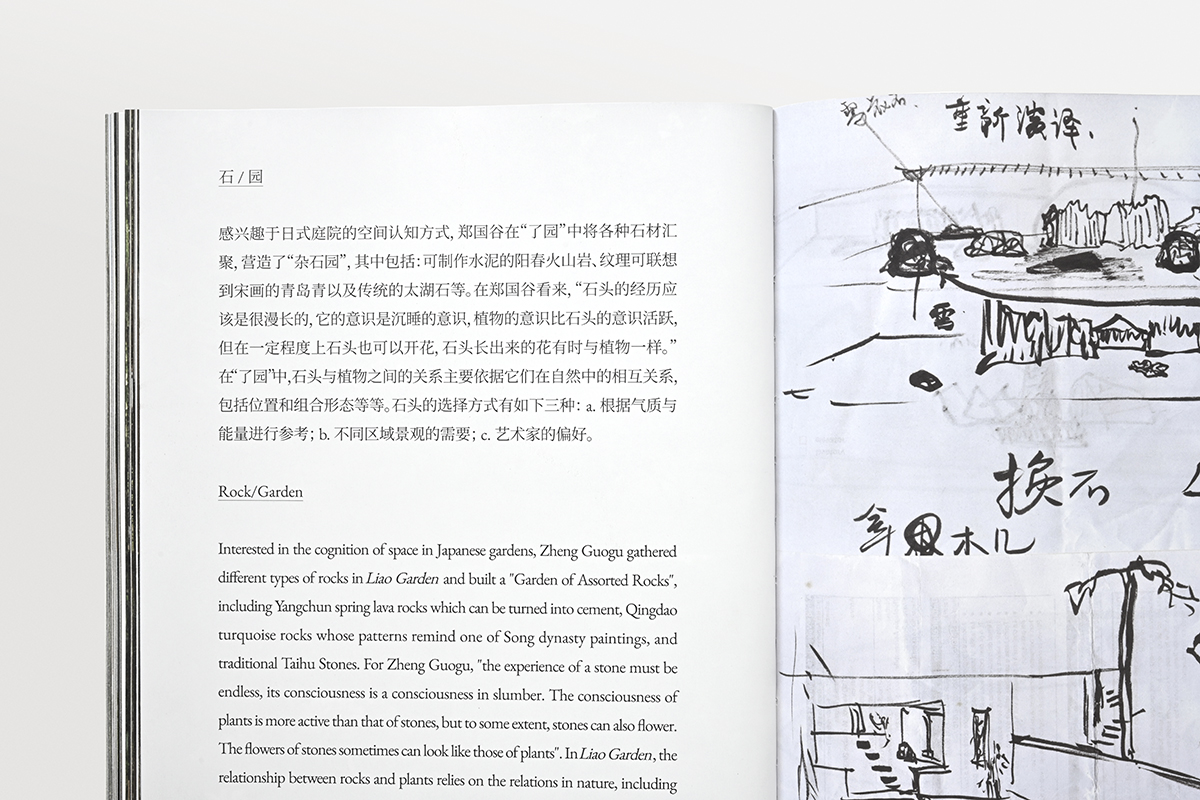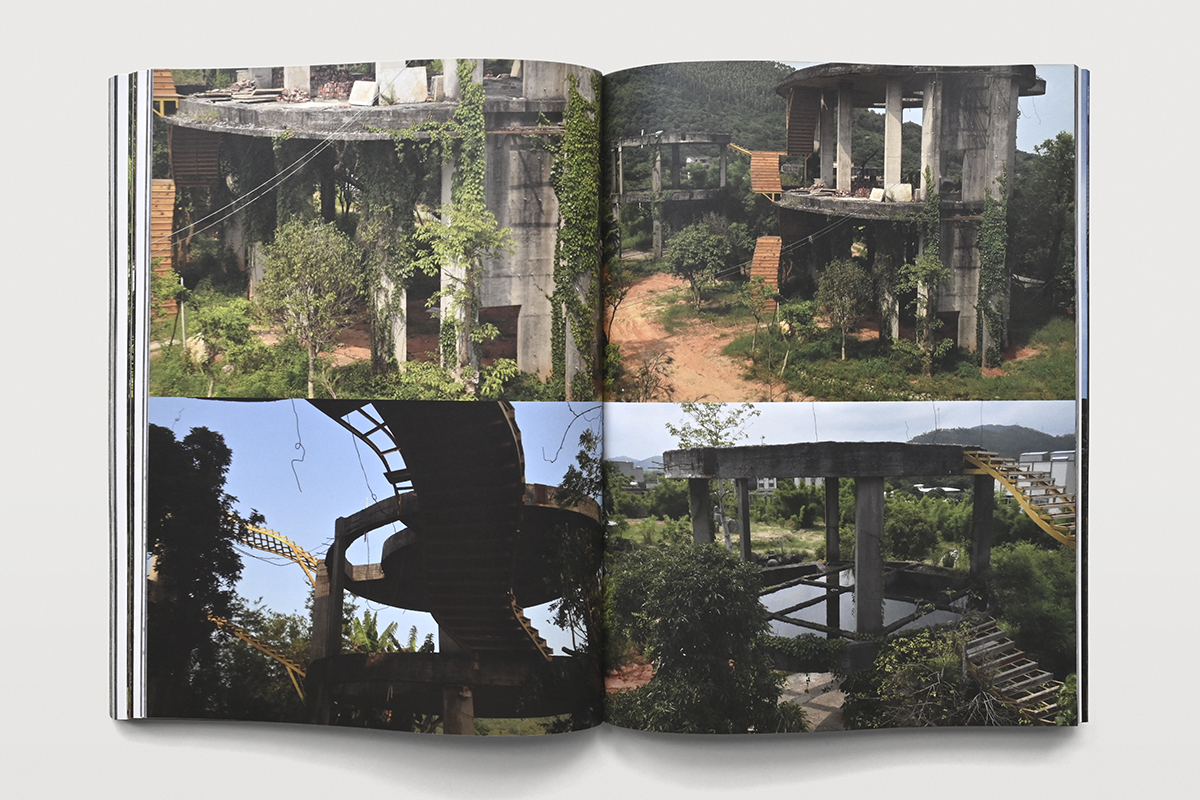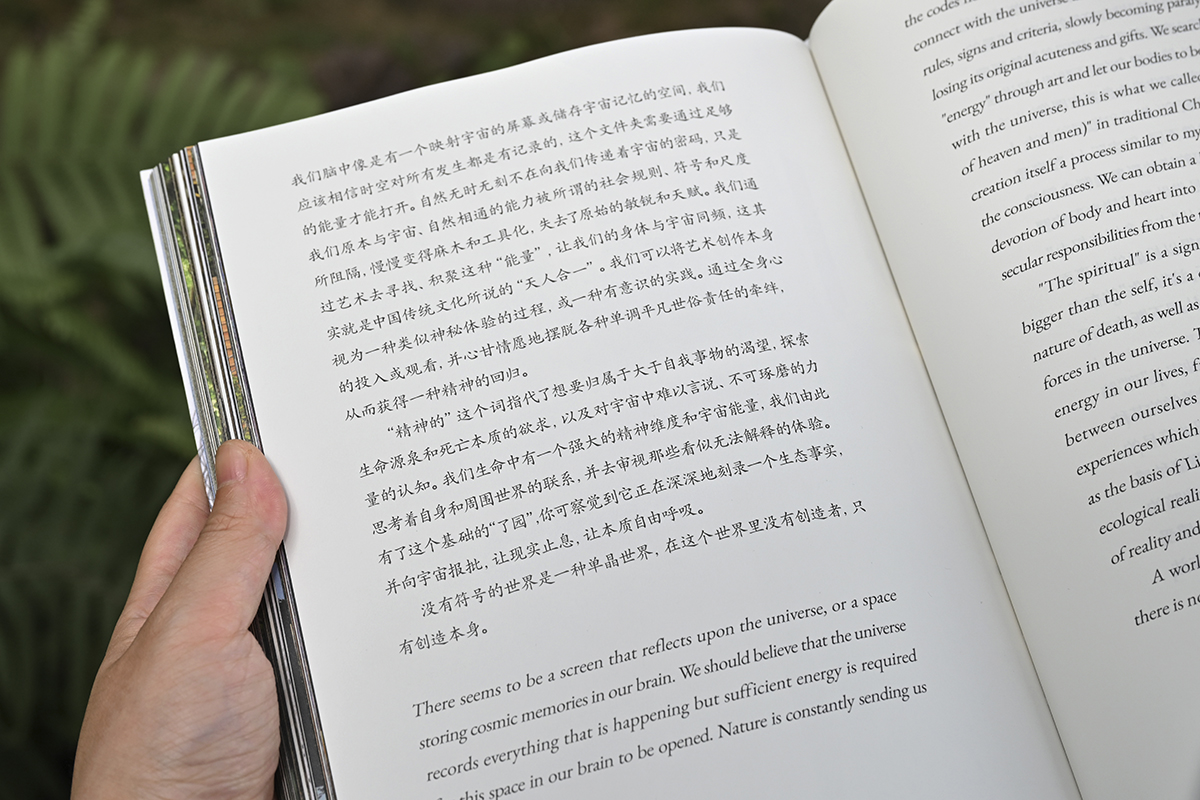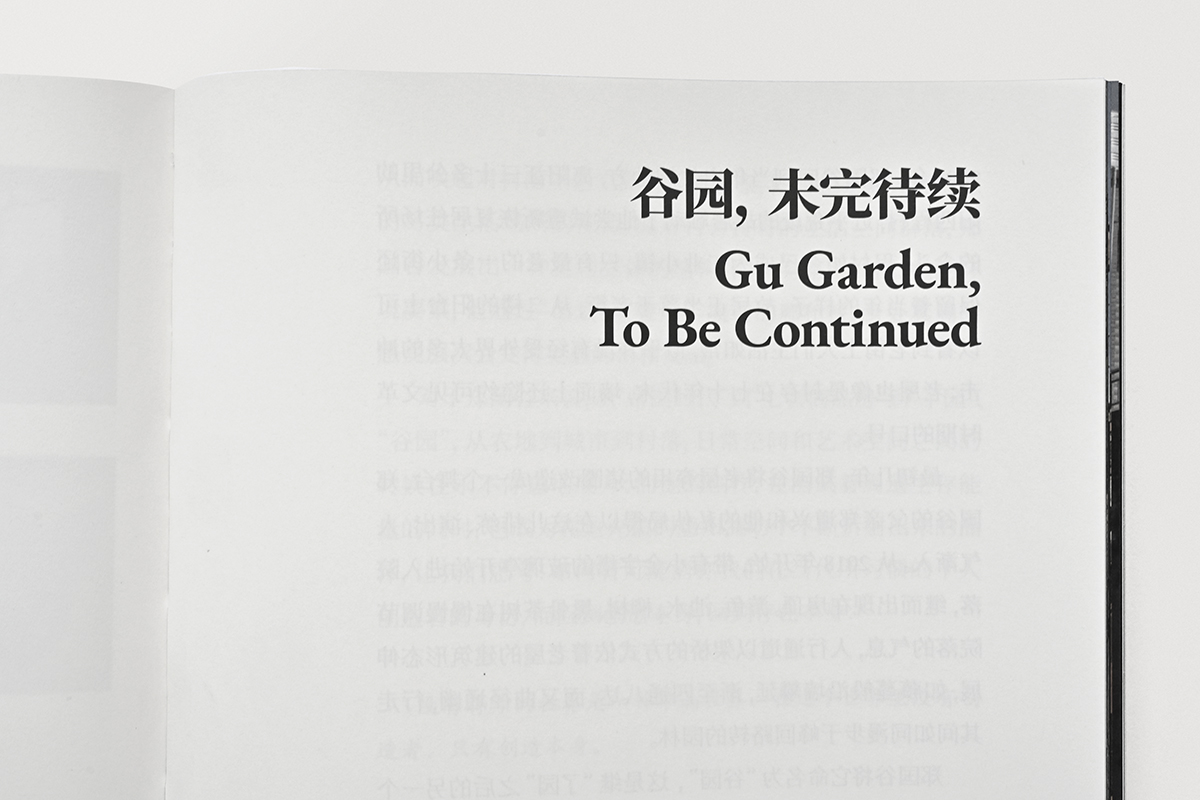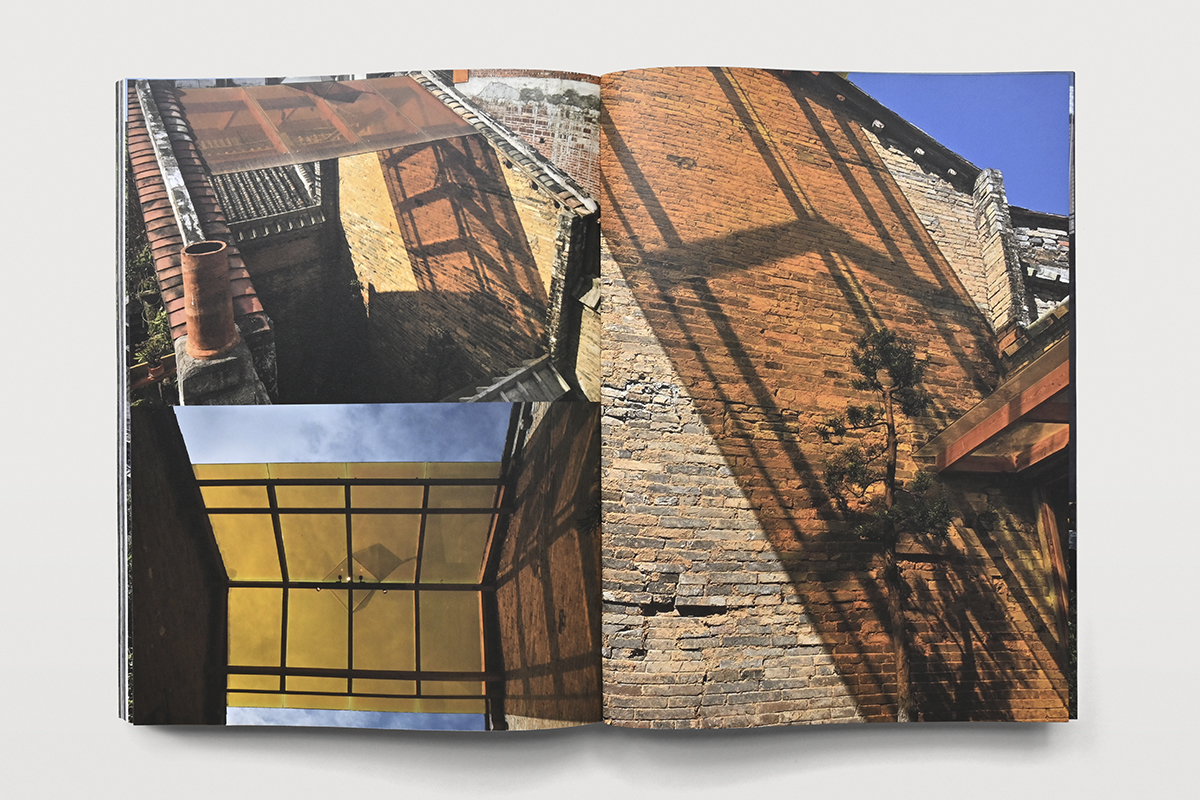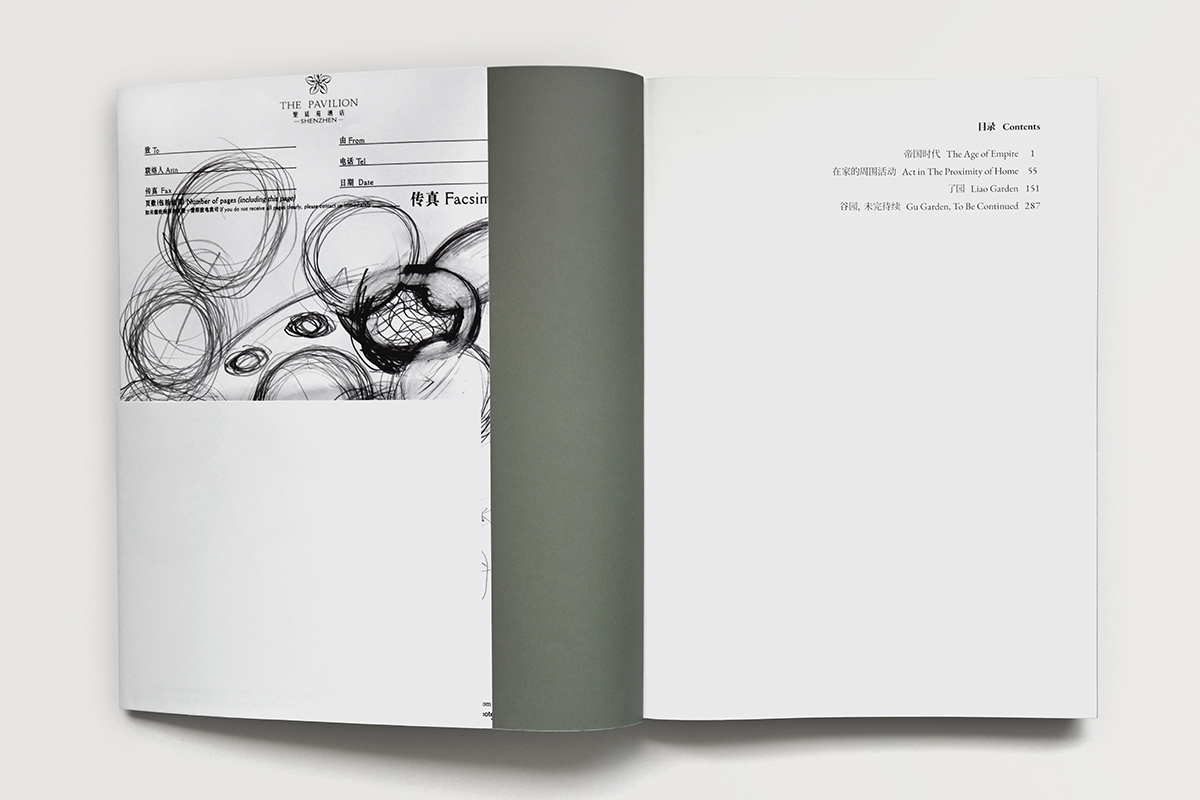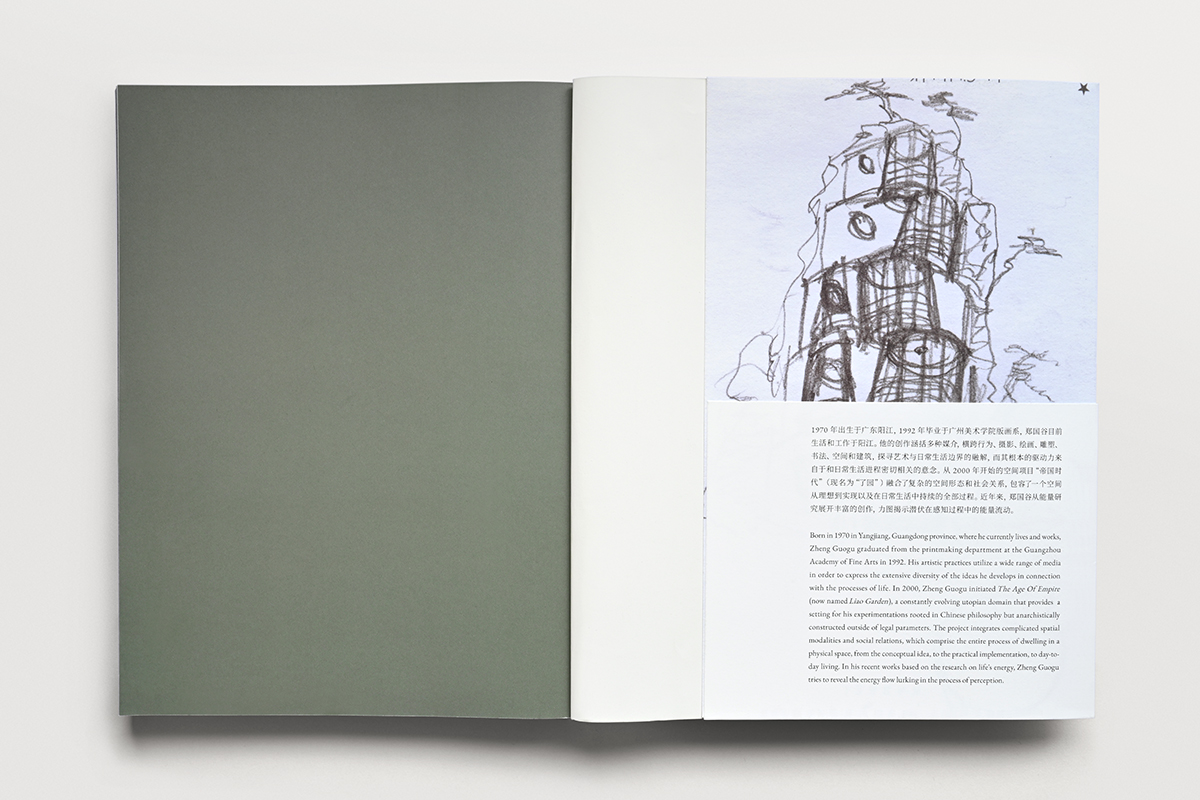[Introduction]
Entitled “From Semiotics To Energetics Vol. 1 – Zheng Guogu: The Everlasting Garden“, this book explores Zheng Guogu’s artistic practices and space philosophy of the last 20 years, and investigates the relation between the “constructed nature” and the transmission of visions of sensory energy.
The story of “Liao Garden” can be traced back to the beginning of the new millennium, when Zheng Guogu encountered a piece of land in the suburb of his hometown Yangjiang. By 2005, when he started the construction of The Age of Empire, the piece of land had been continually expanding. He dug canals and built mountains, planted trees and built houses, just like playing the computer game Age of Empires, but the “Empire” in the real world incorporates more complicated spatial forms and social relations. “Liao Garden” is not just a site-specific, spectacular work, but a project that has extended into real life situations, including the entire process from the conception to the realization of the space, and its sustenance in real life. Since 2012, he changed the name from The Age of Empire to Liao Garden. Despite the name change, Liao Garden will continue upon the unfinished journey set out by its predecessor with new connotations of energetics, where Zheng Guogu would like to describe the artistic concern in the following way:
In the course of its evolution from The Age of Empire to Liao Garden, this place has indeed undergone many changes. The shift that took place from the continuous expansion in The Age of Empire to the focus on perception and cognition in Liao Garden, indicates that the place is mutating toward a different form of aesthetics that is distinguished from semiotics. It’s an aesthetic of the energetics of the ground, such that it would foster an artist’s consciousness and will to take deep roots in the ground, connecting with all kinds of joining points of energy that are buried underneath the surface, responding to them, and letting reality’s contradictions counter each other in one place, a process from which inspiration will naturally spark.
The book invites us to travel through spatial projects undertaken by Zheng Guogu from The Age of Empire, Seven Condos to Liao Garden to Gu Garden, from agricultural land to the city and the village, alongside the series of artworks that he was developing at the time of their construction. For Zheng Guogu, the transformation between daily space and art space goes on uninterrupted. The artworks become the crystals endlessly refracting from this brimful flow of perceptions while testing the energies in his surroundings and making us think: how to return to creation and existence itself?
This book is the first in a series of volumes reflecting on the transition from semiotics to energetics inspired by the practices of Chinese artist Zheng Guogu.
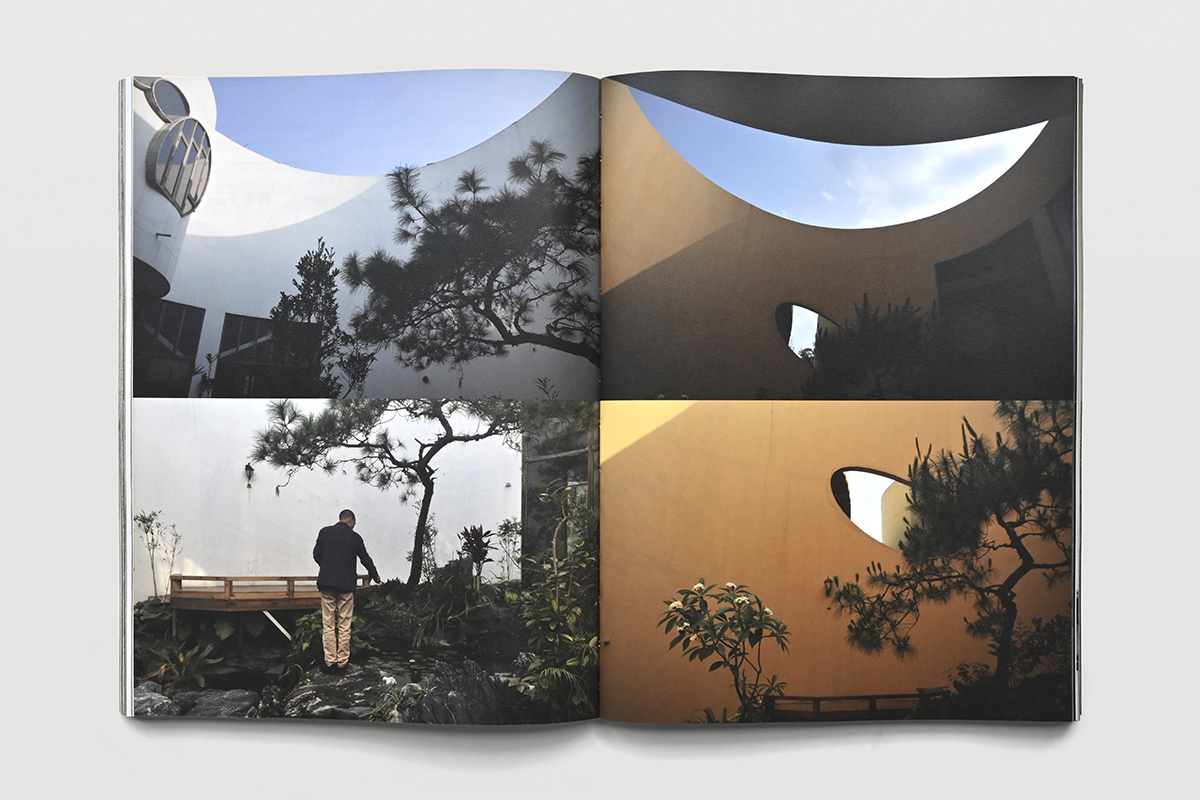 In 2012, Zheng Guogu renamed The Age of Empire to Liao Garden
In 2012, Zheng Guogu renamed The Age of Empire to Liao Garden
[Contents]
帝国时代 The Age of Empire
在家的周围活动 Act in The Proximity of Home
了园 Liao Garden
谷园, 未完待续 Gu Garden, To Be Continued
I. The Age of Empire
[Excerpts from Chapter I]
In 2000, Zheng Guogu encountered a 5,000 m2 plot of land in the suburb of his hometown Yangjiang. When he commenced the construction of The Age of Empire in 2005, the land had expanded to more than twenty thousand square meters, during a time that Zheng Guogu called the “land expansion” period, laying the main territory of The Age of Empire. Zheng Guogu used to be obsessed with the video game series Age of Empires from which the name of his project derived. Years later, he renamed The Age of Empire to Liao Garden.
The Age of Empire was founded upon certain fascination rather than planning. Instead of building it according to a master plan, it has been a process of spontaneous readjustments following the artist’s feelings and thinking since its very beginning: at home, on the road, in hotel rooms, Zheng Guogu would sketch out his imaginations of The Age of Empire. These scattered pieces of drawings would slowly form the spatial relations of the whole in a later process.
Zheng Guogu’s initial aspiration was to merge his interests in the computer game with the architectural questions that he wanted to explore. Through the transformation of landscapes, he created a strange spectacle of The Age of Empire from an ordinary rural farmland. Unlike virtual reality in computer games, the real “Empire” is bound to face more complex spatial forms and social relations. He already had the feeling at the time that it was only through a construction process that was integrated in real life, that a personal secret passage of perception would unfold.
—Excerpts “From Semiotics To Energetics Vol. 1 – Zheng Guogu: The Everlasting Garden”, The Pavilion, Chinese and English, 2021, page 6.
II. Act in The Proximity of Home
[Excerpts from Chapter II]
Seven Condos is the primary residence of Zheng Guogu and his family, meaning that the relationship between the architectural space and its residents required more thoughts and considerations. For that, Zheng Guogu has discovered the pattern of co-existence between plants and other plants, as well as plants with humans through his continuous experimentation. The experiences accumulated during his attempts to build the botanic ecosystem on the rooftop of Seven Condos informed the construction of Liao Garden later, while the experiments carried out in Liao Garden are assimilated back into the environment of Seven Condos.
The architecture of the Yangjiang Group Studio, whose conception and construction began around 2009, stemmed from the construction process of The Age of Empire. In Zheng Guogu’s view, although the architecture of Yangjiang Group Studio looks astonishing from its appearance, what lie beneath it are still oriental architectural concepts. For example, the “air holes” in the building are designed to receive the “Qi” coming from nature, in order for people to feel comfortable in the building. The building of the studio employed very similar techniques to that employed in the building of traditional Chinese gardens.
—Excerpts “From Semiotics To Energetics Vol. 1 – Zheng Guogu: The Everlasting Garden”, The Pavilion, Chinese and English, 2021, page 98, 140.
III. Liao garden
[Excerpts from Chapter III]
From 2012 onward, Zheng Guogu has renamed The Age of Empire to Liao Garden.
In the environment of Zheng Guogu’s Liao Garden, there is the circling of the koi, and there is the intricately layered aquatic system; there is the house made of reinforced concrete, and there is the overgrown plant life; there are the tea leaves that are the compressed distillation of vegetal essences, and there is the “symbol-less” “world of pure energy” to which Zheng Guogu aspires. As though in response to this carefully constructed environment, Zheng Guogu’s paintings are dedicated to the transmission of visions of sensory energy — visions that develop according to diverse trajectories across different temporal processes until they turn into colours and images.
The research into energetics that emerged from Liao Garden may seem to be a radical departure from the transformations of consumer culture that Zheng Guogu has pursued since the 1990s, but in fact he has always had an intense interest in the relations between self-conception and the image mechanisms that infuence individual perception in the contemporary world—systems of consumption and systems of belief both rely on images, text (and the sounds associated with it) and colour to guide people to their life’s desires and dreams. It is precisely through the aid of digital image reconstruction that Zheng Guogu’s Visionary Transformation series extracts traditional Thangka paintings from the center of “classical multimedia power”, and “transforms” the projection of people’s visions into a vague semblance. Given the current disintegration of the “human figure”, is it possible to use the existential properties of this “transformation ” itself as a support for those forms that are constantly changing and disappearing due to their own self-identification?
—Excerpts “From Semiotics To Energetics Vol. 1 – Zheng Guogu: The Everlasting Garden”, The Pavilion, Chinese and English, 2021, page 262.
IV. Gu Garden, To Be Continued
[Excerpts from Chapter IV]
In 2008, Zheng Guogu returned to his birthplace Chengcun in Yangxi, some 30 kilometers from the city of Yangjiang. The derelict former home led him to consider restoring it. Chengcun has now become an industrial town, with its oldest street remaining what it looked like in the past, where his home is located. Observing from the balcony on the second floor, people’s life on the street seems to be as it has always been without too much impact from the outside world; the old building also appears to be sealed in time from the late 1970s, its walls still bear the marks of the slogans from the cultural revolution.
Zheng Guogu converted the disused pigsty in the building into a stage for the first few years, where his father Zheng Daoxing and his Sihuoju could gather to rehearse and perform, and the place was becoming lively. Since 2018, a glass pavilion with a golden pyramid was bullt in the courtyard, then another one on the rooftop. Swimming fish, pond, willow, and other trees are slowly altering the atmosphere of the courtyard. Passages extend along with the architectural form of the old building, climbing upon the walls like a twisting vine that leads to all directions and secluded corners, as if they were the winding paths in a Chinese garden.
Zheng Guogu named it Gu Garden. “Gu” in Chinese has the meaning of “grain”, implicating the context of the village where this garden is situated; it also corresponds to the word “Gu” in Zheng Guogu’s name “Every name brings a specific vibration”, Zheng Guogu associated the sonic vibration of the name “Gu Garden” with the heart chakra detected in his artwork Visionary World in a Changing State of Mind.
—Excerpts “From Semiotics To Energetics Vol. 1 – Zheng Guogu: The Everlasting Garden”, The Pavilion, Chinese and English, 2021, page 288.
Language: Chinese, English
Size: 23 × 16.5 cm
Pages: 315 (full color printing)
Year: 2021
More on >>
[About the Artist]
Born in 1970 in Yangjiang, Guangdong province, where he currently lives and works, Zheng Guogu graduated from the printmaking department at the Guangzhou Academy of Fine Arts in 1992. His artistic practices utilize a wide range of media in order to express the extensive diversity of his ideas in connection with the processes of life. In 2000, Zheng Guogu initiated The Age of Empire (now named Liao Garden), a constantly evolving utopian domain that provides a setting for his experimentations rooted in Chinese philosophy but anarchistically constructed outside of legal parameters. The project integrates complicated spatial modalities and social relations, which comprise the entire process of dwelling in a physical space, from the conceptual ideal, to the practical implementation, to day-to-day living. In his recent works based on the research on life’s energy, Zheng Guogu tries to reveal the energy flow lurking in the process of perception.
Photo: tyu
Image and Text: The Pavilion, ©Authors, The Pavilion, 2021
